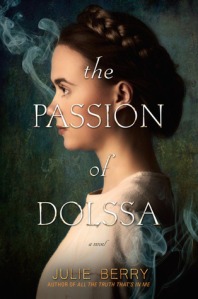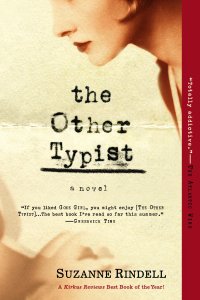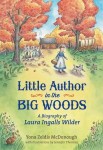 100 years ago today marks the end of the first world war. In the serendipity that is my library request list, The Summer Before the War by Helen Simonson appeared on my hold shelf about a week ago. So it was that I found myself reading a story about the outbreak of the war while my community prepared to commemorate its end.
100 years ago today marks the end of the first world war. In the serendipity that is my library request list, The Summer Before the War by Helen Simonson appeared on my hold shelf about a week ago. So it was that I found myself reading a story about the outbreak of the war while my community prepared to commemorate its end.
In truth, I had placed my name on the waiting list for the book because it was on an “If you like Downton Abbey…” reading list. And it is indeed Downton Abbey-like in its exploration of the way the war affected a small English town. We don’t get a lot of details about what’s happening abroad. The story focuses on the personal rather than the political aspects of the war. It’s about lack of food in the shops, inability to travel, and changed career plans. But the part of the story that fascinated me the most is the portrayal of women’s lives at the time, especially the twenty-three year-old Latin teacher who struggles to be independent from the oversight of the trustees who manage her inheritance. It was another world in terms of how women were permitted to live, but it was a time of change.
If you like gentle stories full of historical details and wry wit, this is a good choice for you. If you are more interested in an account of the war itself, try Through the Barricades by Denise Deegan, which I wrote about here. Or if you want to read about the American home front, don’t miss one of my favorite books Hattie Big Sky by Kirby Larsen.

 There are two types of people in the world: people who reread books and people who don’t.
There are two types of people in the world: people who reread books and people who don’t. In addition to the teen romances I mentioned above, my next choice for a comfort read is historical fiction. I’ve blogged about my interest in historical fiction often enough that this probably doesn’t surprise anyone. But there is something I find incredibly comforting in getting completely out of your own time period. I have recently reread a couple of favorites: The Lost Girl of Astor Street (historical mystery/romance) and No Shame No Fear (historical/romance), and I can highly recommend both to readers whose tastes run similar to mine. ;)
In addition to the teen romances I mentioned above, my next choice for a comfort read is historical fiction. I’ve blogged about my interest in historical fiction often enough that this probably doesn’t surprise anyone. But there is something I find incredibly comforting in getting completely out of your own time period. I have recently reread a couple of favorites: The Lost Girl of Astor Street (historical mystery/romance) and No Shame No Fear (historical/romance), and I can highly recommend both to readers whose tastes run similar to mine. ;) If a book that can be described as “a history lesson” sounds as enticing to you as it does to me, you might like Through the Barricades by
If a book that can be described as “a history lesson” sounds as enticing to you as it does to me, you might like Through the Barricades by  Unreliable narrators in fiction make for some fascinating reading, and what could be more unreliable than a confession? Strangely, I happened to read two such novels recently.
Unreliable narrators in fiction make for some fascinating reading, and what could be more unreliable than a confession? Strangely, I happened to read two such novels recently. The second is another historical novel—published for adults—set in the 1920’s: The Other Typist. I picked up this book because of my interest in the time period, especially women’s lives at that time. I really wasn’t expecting this strange (though not necessarily in a bad way) story that left me wondering what really happened even after I finished reading. The reader knows from almost the very beginning that things don’t end well for our main character, and the story isn’t suspenseful so much as it is filled with foreboding in a way that kept me reading despite knowing that bad things were bound to happen. Don’t get me wrong, it takes a while to get there. It is a confession after all, and it takes time to get to the juicy parts of any confession, as our narrator well knows from her employment as a typist at a police station where her job is to record and type confessions. If you can stick with the story to the end, you’ll be left fitting the pieces of Rose’s story together to determine what you think really happened.
The second is another historical novel—published for adults—set in the 1920’s: The Other Typist. I picked up this book because of my interest in the time period, especially women’s lives at that time. I really wasn’t expecting this strange (though not necessarily in a bad way) story that left me wondering what really happened even after I finished reading. The reader knows from almost the very beginning that things don’t end well for our main character, and the story isn’t suspenseful so much as it is filled with foreboding in a way that kept me reading despite knowing that bad things were bound to happen. Don’t get me wrong, it takes a while to get there. It is a confession after all, and it takes time to get to the juicy parts of any confession, as our narrator well knows from her employment as a typist at a police station where her job is to record and type confessions. If you can stick with the story to the end, you’ll be left fitting the pieces of Rose’s story together to determine what you think really happened. “Inspired by a true story.” These were like magic words to me as a teen reader. I loved reading about real historical figures and events, but nonfiction never kept my interest. So most of my knowledge of history came from historical novels. As a teen I couldn’t get enough of novelized versions of kings’ and queens’ lives, of wars and tragedies, and whatever else I could find.
“Inspired by a true story.” These were like magic words to me as a teen reader. I loved reading about real historical figures and events, but nonfiction never kept my interest. So most of my knowledge of history came from historical novels. As a teen I couldn’t get enough of novelized versions of kings’ and queens’ lives, of wars and tragedies, and whatever else I could find. Then there are the books that introduce me to bits of history that I didn’t know about before.
Then there are the books that introduce me to bits of history that I didn’t know about before. 





